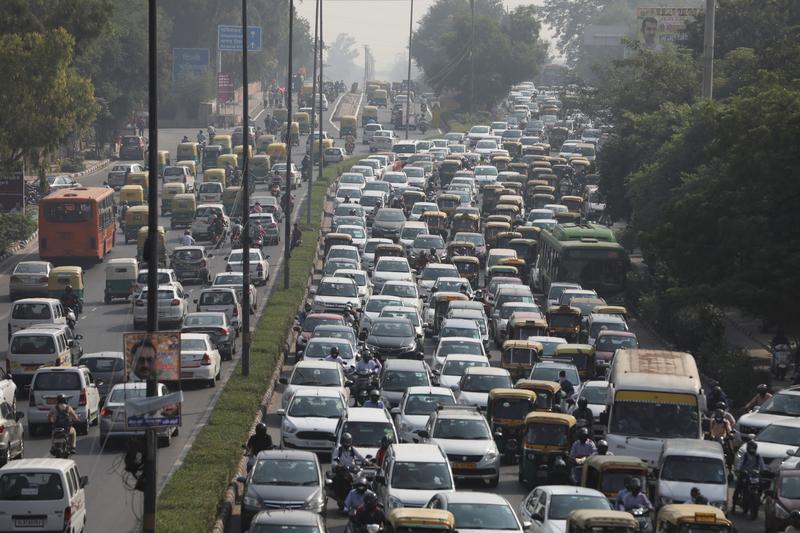Delhi Residents Worry About Toxic Mix Of Covid-19, Pollution
Oct 16, 2020 | Pratirodh Bureau
FILE PHOTO: Vehicles queue at a traffic light on a hazy morning in New Delhi
Families in Delhi with pre-existing health conditions such as asthma are stocking up on oxygen cylinders and pulse oximeters, fearing that the city’s worsening air quality will make them more vulnerable to the coronavirus.
After months of relatively clean air because of a lockdown imposed to fight the virus, pollution levels have spiked to their worst in two years for October, caused by farmers burning crop stubble in surrounding states and cooler weather.
On Friday, haze hung over the capital of 18 million people and the air quality level was at 235 on a scale of 500.
Rupesh Gupta, 45, who has recovered from COVID-19, the disease caused by the coronavirus, said he was an asthmatic and having difficulty breathing the city’s dirty air.
“I am neither able to walk, nor get out of the house. Even if I try and get out of the house, it takes me an effort to breathe,” he said. He lost his mother to COVID-19, so his anxiety levels are high.
“There is paranoia that you never know from what source we might get infection again in our home,” his wife, Neelam Gupta, told Reuters at their residence in a congested west Delhi suburb.
The family has bought a 15 kg oxygen cylinder for emergency use and a portable pulse oximeter to measure oxygen levels in the blood each day.
They are also keen to stock up on air purifiers that most well-heeled families own in Delhi, one of the world’s most polluted cities.
The Air Quality Index (AQI) has remained in the “very poor” category all week due to slowing wind speeds that allow deadly pollutants such as PM2.5 particles to remain suspended in the air.
“Air pollution will weaken the respiratory tract, lung functions will be compromised. The probability of catching COVID-19 would increase substantially,” said Vivek Nangia, principal director and head, Max Super Speciality Hospital in New Delhi.
India is behind only the United States in terms of coronavirus cases, touching 7.37 million on Friday. Delhi is one of the hot spots of the disease, with 321,031 cases.
